
How to Grow Lavender From Seeds
Growing lavender from seeds requires selecting Lavandula angustifolia or Lavandula stoechas from reputable sources. Consider hybrid Lavandin seeds for unique qualities. You can choose to sow indoors in late winter or outdoors in mild climates. Cold stratification can aid germination; try methods like the paper plate or direct refrigeration. Use a well-draining tray and quality soil for planting. Plant the seeds shallowly and ensure they receive adequate light for sprouting. Proper light exposure is crucial for robust growth. Mastering these steps is essential for successful lavender cultivation. Key Takeaways For optimal results, choose either Lavandula angustifolia or Lavandula stoechas seeds. Implement cold stratification methods to enhance germination success. Utilize a well-drained seed tray with adequate light exposure. Opt for indoor sowing in late winter to control growing conditions effectively. Confirm seed choice and ensure a suitable climate for the best growth outcomes. Seed Selection and Sourcing When choosing lavender seeds, it's essential to select them from reputable sources to ensure quality and the specific cultivars you desire. Opt for Lavandula angustifolia or Lavandula stoechas seeds if you have particular characteristics in mind for your lavender plants. Verify if the seeds need any special treatment such as stratification before planting them
read more →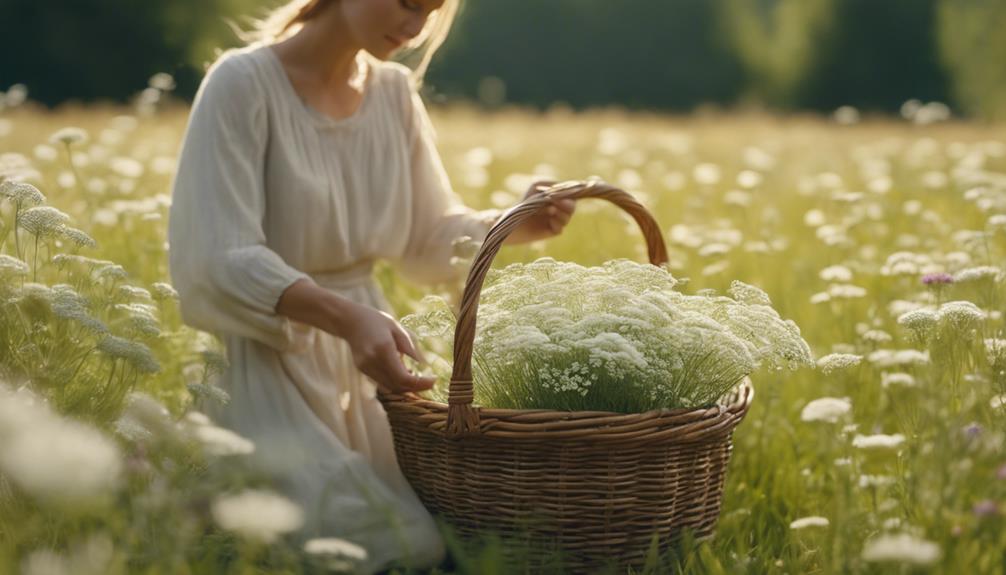
Harvesting And Using Yarrow
Yarrow, a humble yet mighty herb, has been employed for centuries to staunch wounds, soothe digestive issues, and even conjure love potions. To tap into its secrets, it's essential to know how to harvest and prepare it properly. The best way to pluck its stems is during the morning, after the dew has evaporated, and before the full sun reaches its peak. Choose stems with fresh, green leaves and avoid those with signs of wilting or damage. Cut the stems just above a node, using scissors or pinch them off with your fingers, to encourage new growth. For medicinal use, tie the stems in small bunches and hang them upside down in a warm, dry, dark place. Allow the yarrow to air-dry completely, which may take one to two weeks, depending on the humidity and temperature. Once dry, remove the leaves and flowers from the
read more →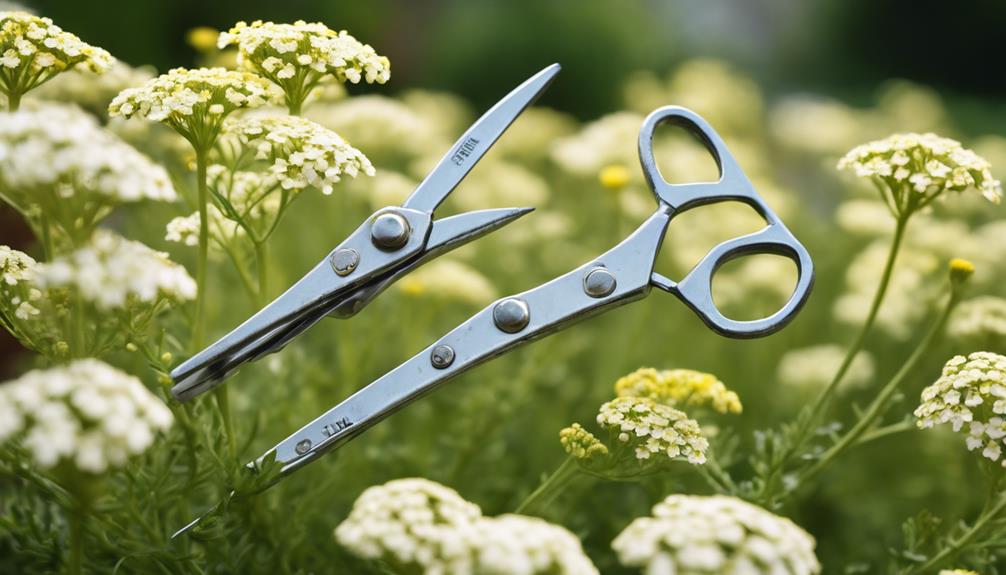
How To Prune Yarrow For Optimal Growth
Pruning is a crucial step in cultivating a thriving yarrow plant. To achieve optimal growth, it's essential to understand the best time to prune, the right tools to use, and the techniques to employ. Pruning at the right time encourages healthy growth, increases flower production, and maintains the plant's shape. Using clean, sharp, and sterile pruning tools prevents the spread of diseases and promotes healthy cuts. Remove any dead, damaged, or diseased stems, and cut back overgrown branches to encourage bushy growth. Divide and replant yarrow every 3-4 years to maintain its vigor. By following these expert tips, you'll be able to coax peak growth from your yarrow, resulting in a lush, blooming masterpiece. Key Takeaways Prune yarrow plants during the early growing season to maintain their shape, promote bushy growth, and remove dead or damaged foliage. When pruning, cut stems at
read more →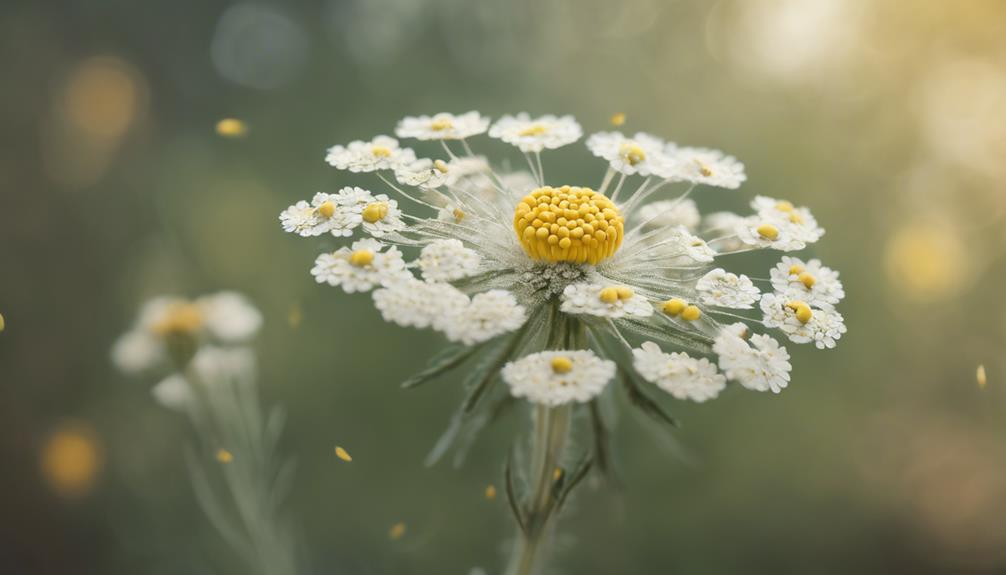
Most Common Yarrow Seeds
As you embark on cultivating life, the humble common yarrow seed germinates, poised to unfurl into a resilient and versatile herb. Thriving in well-draining soil with a pH range of 6.0-7.0, these seeds tolerate full sun to partial shade. The exceptional adaptability and medicinal properties of yarrow make it truly special. With its rich history and diverse uses, this plant boasts incredible facets waiting to be discovered. Key Takeaways For optimal growth, provide Common Yarrow seeds with full sun to partial shade and well-draining soil, maintaining a pH range of 6.0-7.0. Directly sow seeds into the ground in spring or fall, pressing them into the soil without covering, to ensure successful germination. Maintain consistent soil moisture during the first few weeks after planting to promote healthy seedling growth. Yarrow plants are adaptable and can thrive in areas with average to poor
read more →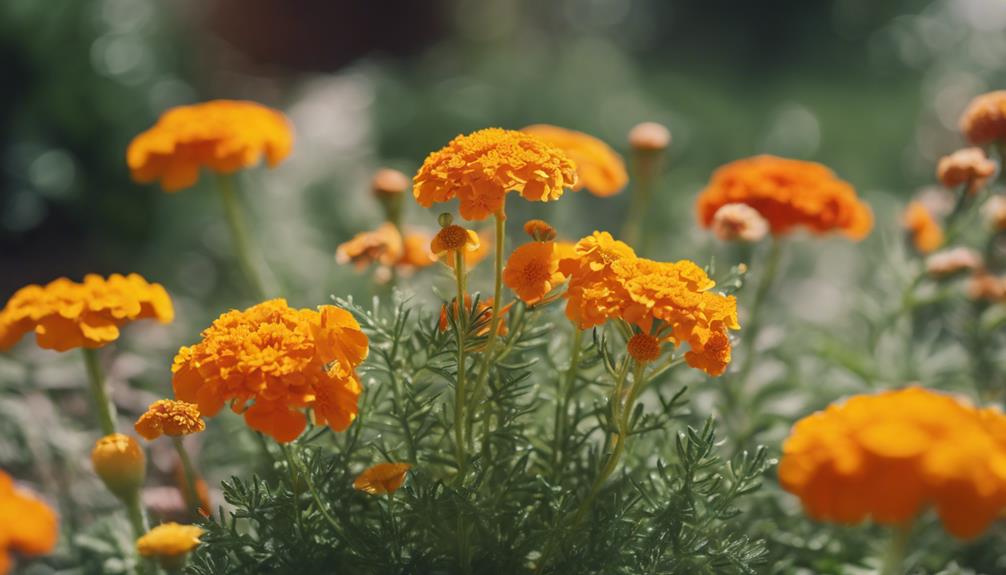
Troubleshooting Yarrow Gardening
When tending to your yarrow garden, you may encounter common issues like leggy stems, weak growth, and disease susceptibility. Identifying the root causes of these problems is crucial to preventing them. Leggy stems can be caused by insufficient light, inadequate pruning, or overcrowding. Weak growth may result from poor soil quality, inadequate watering, or lack of fertilizer. Disease susceptibility can be attributed to poor air circulation, excessive moisture, or inadequate sanitation. By understanding the underlying causes of these issues, you can take proactive steps to create a thriving, low-maintenance yarrow garden. Key Takeaways Ensure yarrow receives full sun (at least 6 hours of direct sunlight) and well-draining soil with a pH between 6.0 and 7.0 to prevent leggy stems, root rot, and diseases. Regularly inspect yarrow plants for signs of pests (aphids, spider mites, whiteflies) and diseases (powdery mildew, root rot),
read more →
Understanding Yarrow Growth Cycles
Yarrow, a versatile herb, has an impressive ability to adapt to various environments, but only if you comprehend its unique growth cycles. By recognizing the subtle cues in yarrow's development, you can stimulate an abundance of delicate white or yellow blooms. The key to unlocking its full potential lies in understanding the triggers of this transformation and replicating the ideal conditions. Yarrow's life cycle is characterized by distinct stages, including germination, growth, flowering, and dormancy. During the germination phase, yarrow seeds require adequate moisture and warmth. As the plant grows, it develops fern-like foliage and can reach heights of up to 3 feet. In the flowering stage, yarrow produces clusters of small white or yellow blooms. After the blooming period, the plant enters dormancy, during which it conserves energy for the next growth cycle. By recognizing and catering to these distinct stages,
read more →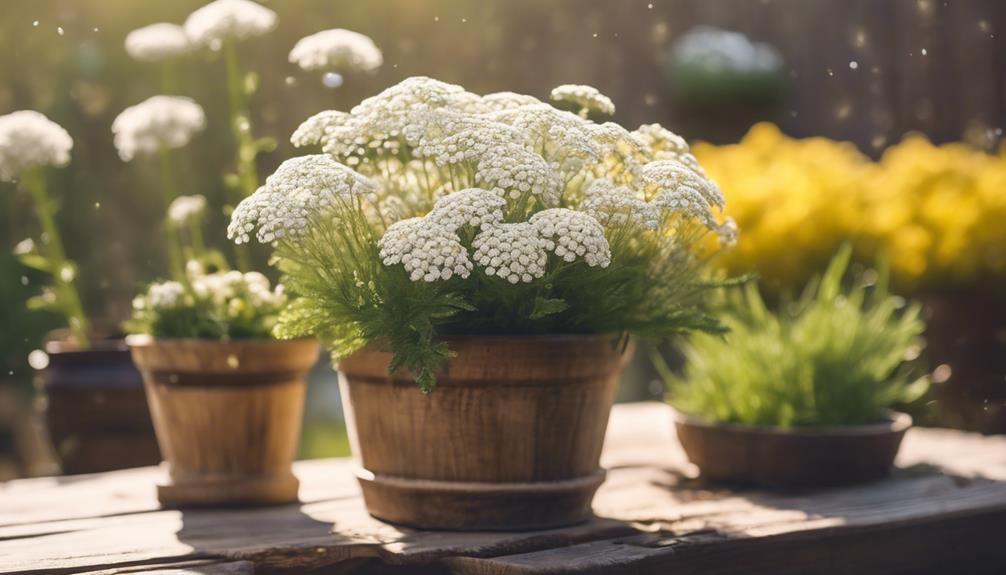
Indoor Yarrow Gardening Tips
To successfully grow yarrow indoors, it's essential to provide the right conditions. This finicky plant requires attention to detail, from selecting the perfect container to fostering a healthy root system. By understanding the nuances of indoor yarrow gardening, you can coax vibrant blooms and avoid common pitfalls. Key Takeaways Use a container with good drainage, at least 12-15 inches deep, and a well-draining potting mix to prevent waterlogged soil and root rot. Ensure the pot has drainage holes to prevent water accumulation. Provide 4-6 hours of direct sunlight daily, or use grow lights with a minimum of 12-14 hours of light per day. Maintain a consistent room temperature between 65°F to 75°F (18°C to 24°C) for optimal growth. Water yarrow plants when the top 1-2 inches of soil feels dry to the touch. Aim to provide approximately 1/2 inch of water per week, either
read more →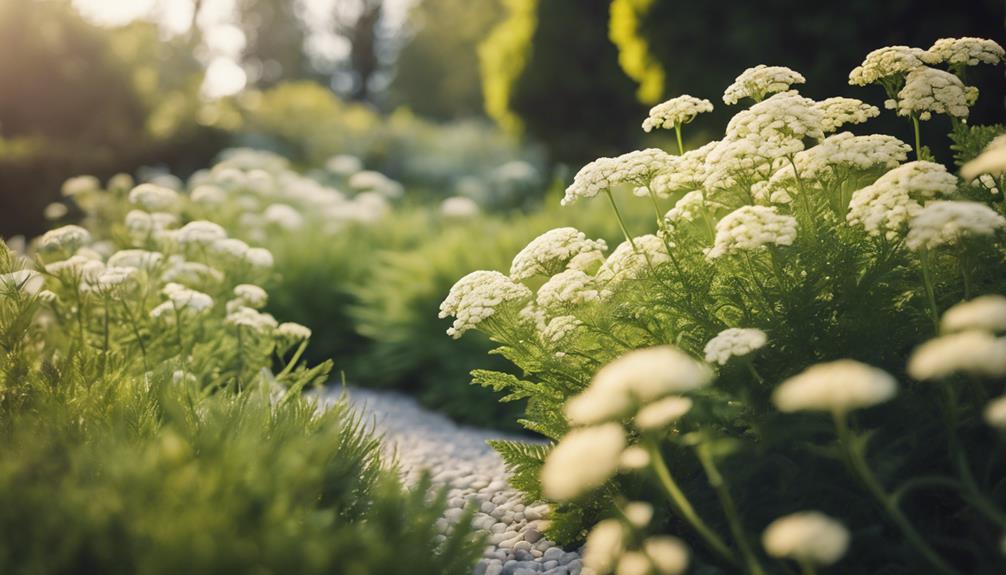
How To Grow Yarrow In Pots
To successfully grow yarrow in pots, it's essential to get the foundation right. Start by selecting a spacious pot with excellent drainage to prevent waterlogged soil. Use a well-balanced potting mix that drains excess water and retains adequate moisture. A thoughtful watering strategy is also crucial, as yarrow prefers moist soil but can be susceptible to root rot if waterlogged. Once the basics are in place, learn how to prune, propagate, and troubleshoot common issues to ensure your yarrow thrives. Key Takeaways Use a large pot with a minimum capacity of 4 liters, ensuring excellent drainage to prevent waterlogged soil. Select an all-purpose, peat-free potting mix that contains vermiculite or perlite for well-draining soil. Place the pot in a location that receives at least 6 hours of direct sunlight daily, but can tolerate partial shade. Water carefully, avoiding overwatering, and maintain
read more →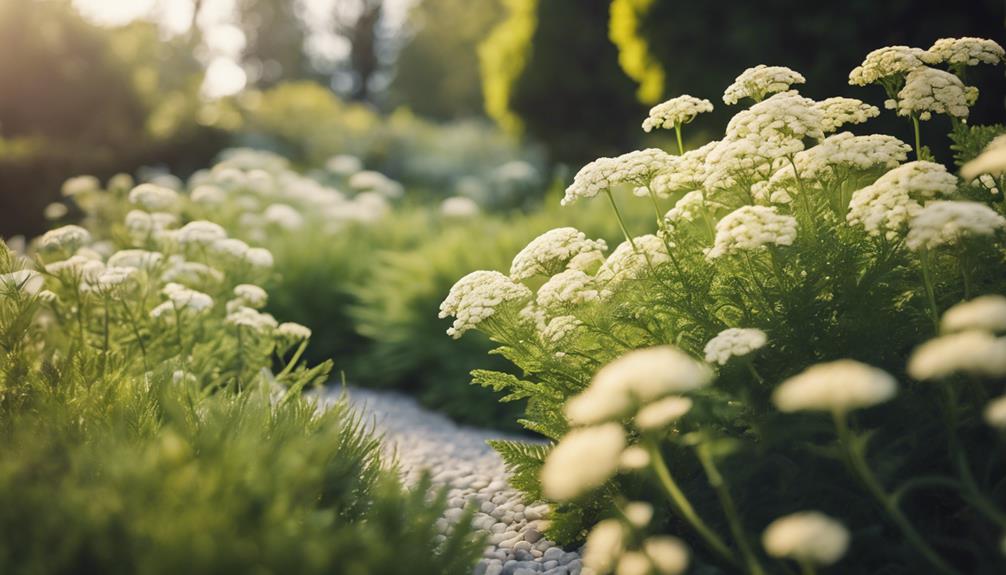
Choosing The Right Yarrow Varieties
With numerous yarrow varieties available, selecting the right one for your garden can be daunting. While vibrant flowers may initially capture your attention, it's essential to consider other key factors. Compact growth is ideal for smaller spaces, whereas larger gardens can accommodate statement pieces. Each variety's unique characteristics significantly impact the overall aesthetic of your outdoor space. By exploring the diverse range of yarrow varieties, you'll find the perfect addition to enhance your garden's beauty and functionality. Key Takeaways Determine the desired flower color to match your garden's aesthetic, with options ranging from pure whites to vibrant reds and sunny yellows. Select a yarrow variety that fits your available space, considering heights ranging from 10 inches to 4 feet and growth habits from compact to sprawling. Choose a variety based on its foliage texture and variation, such as finely divided, fern-like,
read more →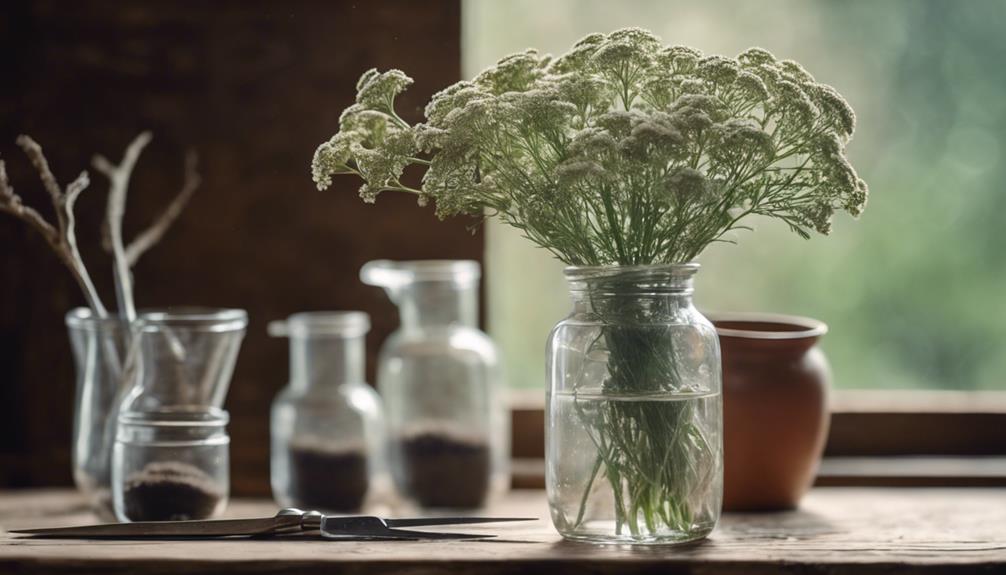
How To Grow Yarrow From Cuttings
Growing yarrow from cuttings is a crucial step in harnessing its medicinal properties. As a plant renowned for its ability to stop bleeding and promote healing, cultivating yarrow allows you to tap into its full potential. To successfully grow yarrow from cuttings, it's essential to understand the process. This involves selecting healthy parent plants, preparing the cuttings, and providing optimal growing conditions. By following these steps, you can coax the cuttings into thriving, medicinal powerhouses. Key Takeaways Select vigorous yarrow cuttings with bright green leaves and a compact growth habit to ensure successful propagation. Ensure stems are around 3-5 inches long, measured from the node, and remove lower leaves to prevent rotting and promote healthy root development. Plant the prepared cuttings in well-draining potting mix, gently firming the soil around the stem to secure it in place. Ensure consistently moist soil and provide
read more →